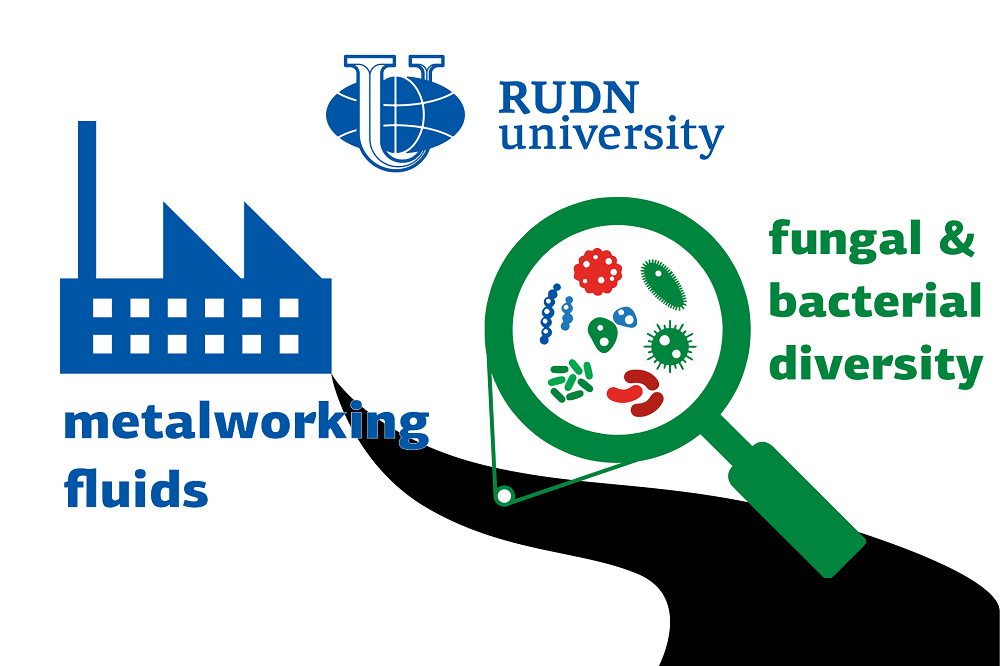RUDN Biologists Study Live Microorganisms in Toxic Liquids for Metalworking

Metal parts during processing must be lubricated, cooled and protected with special liquids. Large factories annually use thousands of tons of such cutting fluids (coolants), which must be disposed of after use. Liquids are toxic, which makes it impossible to dispose of them with household waste. Once in the water, they make it dangerous to the environment. Microorganisms can cope with this problem. They can “digest” toxic residues and make water safer. This process is called biodegradation. To find such microorganisms, you need to find out which of them are able to survive in a toxic environment. To do this, RUDN biologists determined the composition of the microbiota in the coolant.
“Metalworking fluids are used to lubricate, cool and remove metal chips in turning, milling, boring, grinding, drilling and other operations. The disposal of such liquids is a serious problem. To reduce environmental damage, new methods are needed. Artificial introduction of cultures of microorganisms can accelerate the decomposition of used fluids. Therefore, we decided to study the fungal and bacterial microbiota of the waste fluids,” Sergey Elansky, Doctor of Biology, Professor at RUDN University’s Agrobiotechnological Department.
Biologists studied 9 types of liquids obtained from various metalworking enterprises using two methods. The first one is the traditional method of isolating pure cultures. The second is next generation sequencing (NGS). Using NGS, bacteria of 18 genera and fungi of 17 genera were identified that can grow in the coolant. Pure cultures of microorganisms were tested for growth in 6 different cutting fluids. The most active microorganisms for the biodegradation of waste liquids were selected — they turned out to be fungi of the genus Fusarium.
“Data on the species composition of microorganisms in waste metalworking fluids will allow us to develop specific and highly sensitive test systems that can be used to search for and evaluate the concentration of the most active degrading microorganisms. This will optimize and reduce the cost of waste coolant disposal,” Elena Chudinova, PhD, Head of the Laboratory for Molecular Analysis of Microorganisms at RUDN University.
The results are published in the Journal of Cleaner Production.
The project to develop a cellular model of the placenta became the winner in the Scientific Materials category of the Young Scientists 3.0 competition, organized with the support of the Presidential Grants Foundation and T-Bank.
Ten scientific journals published by RUDN University have been included in the highest level of the state list of scientific publications, the White List.
Forests are not only the lungs of the planet, but also home to millions of species. However, it has remained unclear how underground interactions between trees and fungi affect forest species richness in different climatic conditions. Previous studies have yielded conflicting results: in some regions, the dominance of certain fungi reduced tree diversity, while in others it increased it.
The project to develop a cellular model of the placenta became the winner in the Scientific Materials category of the Young Scientists 3.0 competition, organized with the support of the Presidential Grants Foundation and T-Bank.
Ten scientific journals published by RUDN University have been included in the highest level of the state list of scientific publications, the White List.
Forests are not only the lungs of the planet, but also home to millions of species. However, it has remained unclear how underground interactions between trees and fungi affect forest species richness in different climatic conditions. Previous studies have yielded conflicting results: in some regions, the dominance of certain fungi reduced tree diversity, while in others it increased it.